Translation: May 1902 La Stampa Sportiva: Vanderbilt, Jr. Breaks the One-Kilometer Land Speed Record
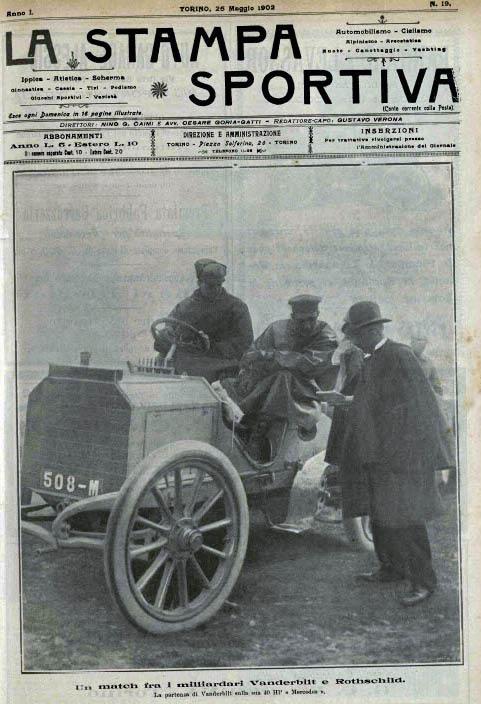
Last week, Professor Pau Medrano Bigas, Professor of Graphic Design at the University of Barcelona, has forwarded two articles on William K. Vanderbilt Jr. breaking the one-kilometer land speed record twice in 1902 as reported in the Italian magazine La Stampa Sportiva.
Dr. Andrea Fedi, Department of Cultural Studies and Comparative Literature, Stony Brook, has graciously translated the first article and provided the following commentary:
Dr. Fedi: "I found this article very interesting, for the philosophical and social considerations. The original can be downloaded from this source. On page 15 of that issue, there is an ad for Continental tires that mentions Vanderbilt's recent record (see below).
I have tried to remain as close as possible to the literal meaning and the style of the original.
I have tried to identify the journalist or writer who hides behind the pseudonym of "Black Cat": I am pretty sure it is Cesare Goria-Gatti (1860-1939), a lawyer who worked in Turin and was involved in the creation of the automotive industry in Piedmont. He was instrumental the creation of the Italian Automobile Club (ACI), wrote many articles (in fact, he was one of the founders of the Sunday Supplement to newspaper La Stampa, entitled La Stampa Sportiva in 1902), and he raced first on bicycles and then on cars under the pseudonym of Black Cat."
Enjoy,
Howard Kroplick
[page 1]
La Stampa Sportiva
Turin, May 25, 1902
[Caption]
A match between millionaires Vanderbilt and Rothschild
Vanderbilt's start on his 40 HP "Mercedes."
--
[page 8]
Motoring for Millionaires
Henry de Rothschild and W. K. Vanderbilt
Given its nature, the technical competence that it demands from its practitioners, its power of suggestion over the most sensitive minds, the means that are needed and many other reasons, motoring can truly be called an //aristocratic// sport in the best and most refined meaning of the Greek term. In just a few years we have seen men of letters, scientists, princes, writers, artists, poets, professionals, property owners, etc., fascinated by the new sport, who devote themselves to it with all their heart, and everyone finds in it a special kind of satisfaction, varying in nature and quality based on the personal inclinations and the particular tastes of each.
Some apply themselves to finding new, more perfect mechanisms, some refresh their weary spirits, some look there for new inspiration, some get intoxicated by the dizzying speeds, some put it to good use for long journeys, others for modest and peaceful little trips, some make use of it for their own pleasure, and lastly some are able to combine it with a beneficial concern for others.
That's how today we have the spectacle of two very wealthy millionaires, who get out of motoring two different and intense forms of satisfaction: Mr. Henry de Rothschild and Mr. W. K. Vanderbilt.
Both automobilism enthusiasts, in it they find: one, the fulfillment of his own audacity and the evidence of his individual courage; the other, the application of his own ingenuity as a learned mechanic, and the intimate satisfaction of doing something beneficial to others.
***
The American Croesus W. K. Vanderbilt, as we have already announced on these pages, beats the one-kilometer world record with an automobile powered by a gasoline engine, equipped with Continental tires, reaching a speed equivalent to an average of 111 km 111 m per hour. This performance took place after a friendly racing //match// between Vanderbilt and Rothschild, both owners of a Mercedes with 40 HP.
They were supposed to have a 10-kilometer race and the stake would be donated to charity, but after they traveled to Chartres, where there was also another millionaire motorist, Mr. Wolf Bishop, given the terrible conditions of the roads, they chose instead to try the flying one-kilometer record, and Vanderbilt came out the winner.
***
Mr. de Rothschild, however, devotes his ingenuity and his millions to motoring in a yet more beneficial and rational way.
Learned and enterprising, he passionately devoted himself to the study of mechanical engineering and had the dream of becoming an automobile manufacturer. And in the same way that as a doctor he devotes his activity to the unfortunate, disenfranchised people, he wanted, as he was becoming a mechanical manufacturer, to provide relief to the poor in this new position of his as well.
He opened a manufacturing shop for the production of his own special type of automobile, and he assigned the profits to the hospital that he supports with his money in Paris, in rue Mercadet. With the prospect of a substantial revenue, the hospital increased the number of beds from 10 to 40, and while waiting for the profits of the mechanical shop to meet the needs of the hospital, the millionaire doctor helps the millionaire mechanic in his charitable work.
However the shop's production goes, the poor will never be missing anything.
Blessed motorism, how many miracles you are performing!
Black Cat.
La Stampa Sportiva, May 1902
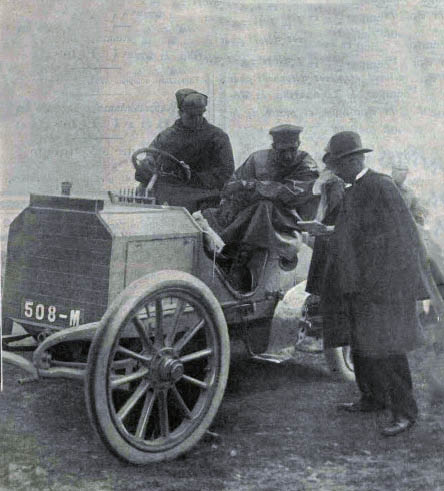
Caption: A match between millionaires Vanderbilt and Rothschild . Vanderbilt's start on his 40 HP "Mercedes."
On his way to participate in the Circuit du Nord (Paris/Arras/Paris) race, on May 2, 1902, Vanderbilt challenged D. Wolf Bishop and Baron Henri de Rothschild to a one-kilometer match race between Ablis and Chartres in France. Willie K. not only won the race in his 40hp Mercedes Simplex but established a one kilometer "flying start" speed record of 111.8 kilometers per hour (69.5 mph).
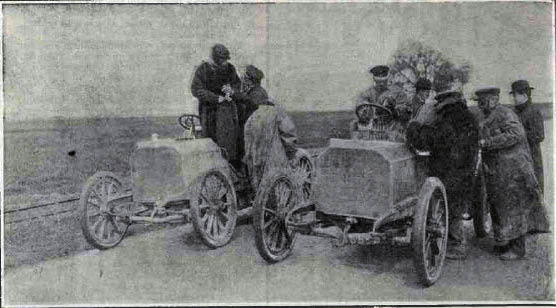
Caption: American millionaires Bishop (on the right) and Vanderbilt (on the left).
T
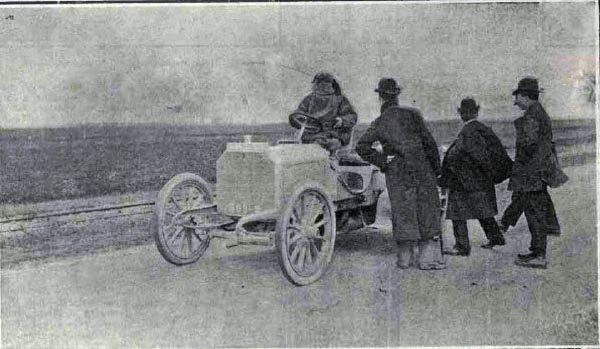
Caption: Vanderbilt's start for the one-kilometer record.
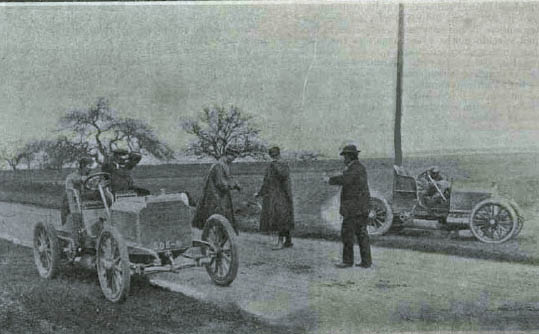
Caption: The official timekeeper confirms to Vanderbilt the quite brilliant time achieved, of 32" 2/5.
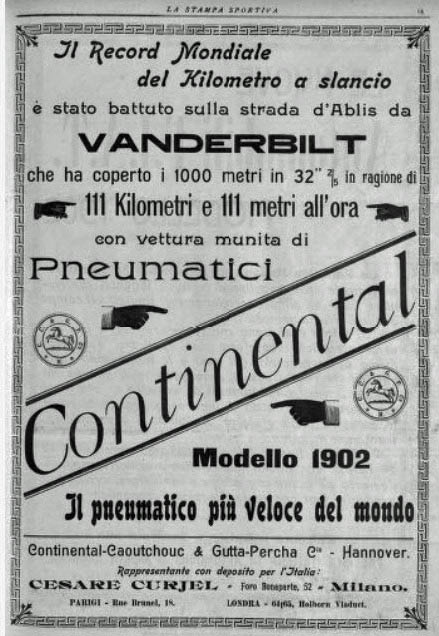
Continental ad celebrating Vanderbilt's record.
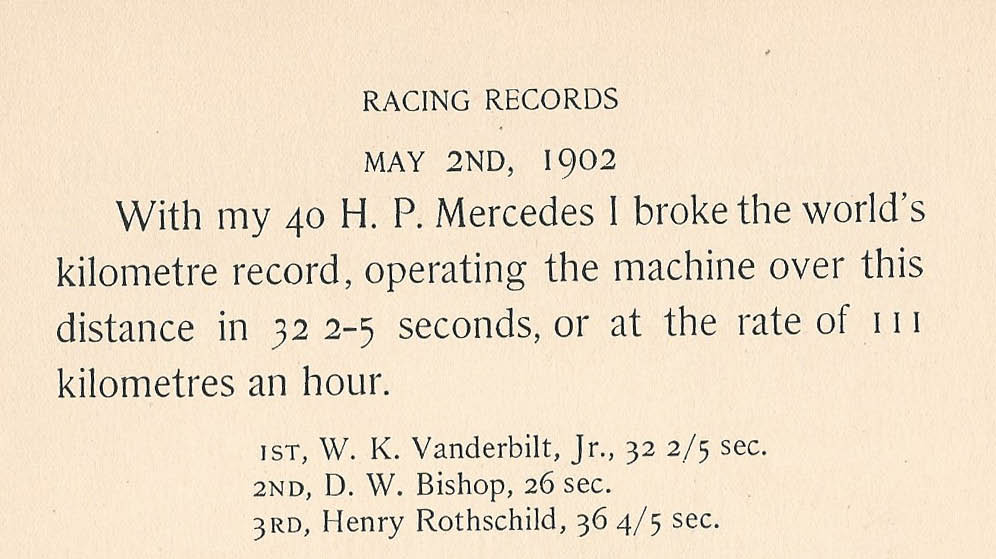
Vanderbilt documented the race in his book Log of My Motor 1899-1908.
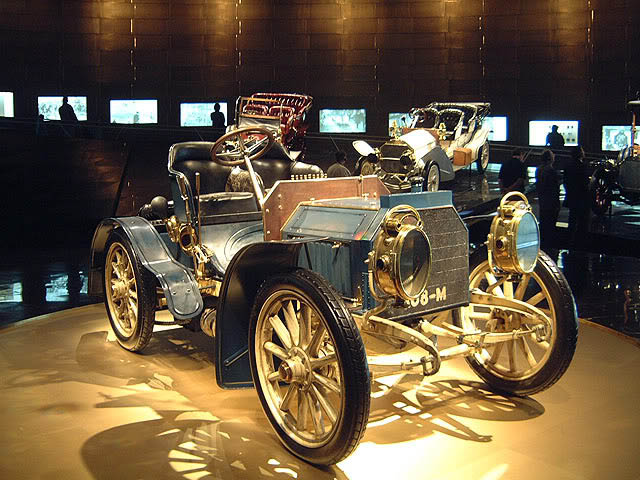
Vanderbilt's 40HP Mercedes Simplex is considered the oldest surviving Mercedes and is on display at the Mercedes-Benz Museum in Stuttgart, Germany.
La Stampa Sportiva, August 1902
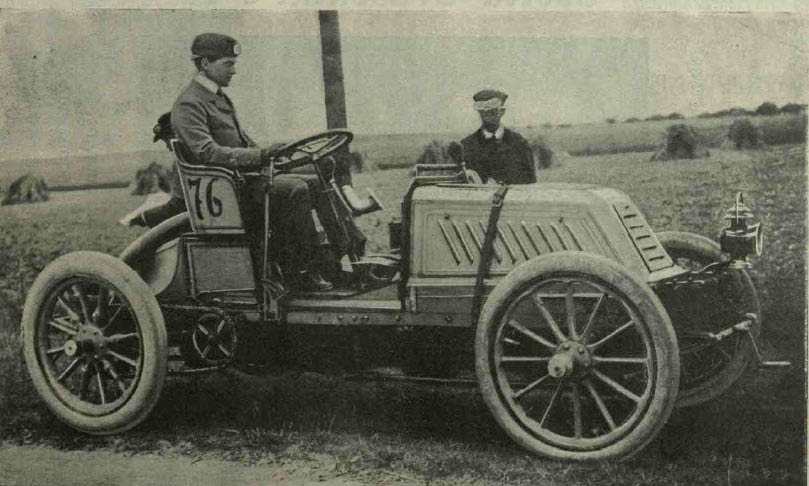
Three months later, Vanderbilt broke his own record in a 60 HP Mors driving one kilometer at a speed of 122.4 kilometers per hour (76.05 mph).

Vanderbilt documented the new record in Log of My Motor 1899-1908.

Comments